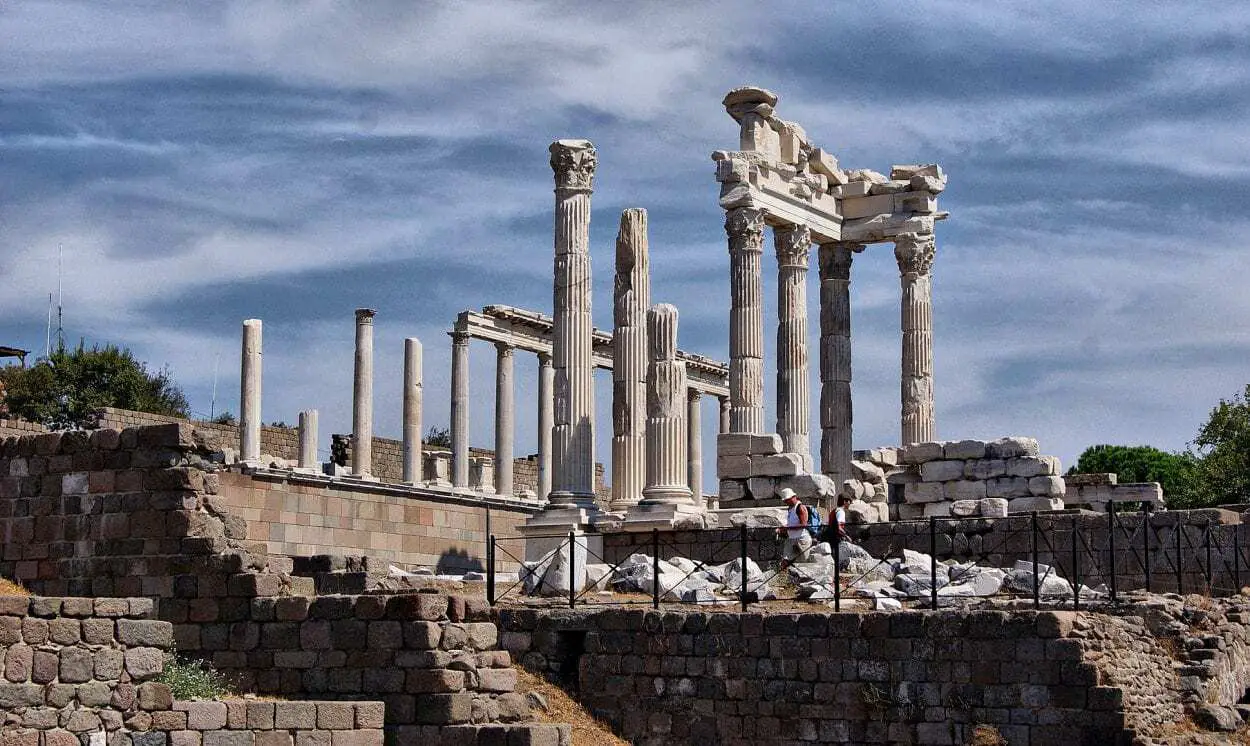Pergamon, also called Pergamum and Pergamos is an ancient Greek city on the Caicus plain in the region of Mysia, northwest Turkey.
The earliest evidence of occupation dates from the Archaic period from the late 8th century BC, with Pergamon first mentioned in literary sources from Xenophon’s Anabasis composed circa 370 BC.
From the late 5th century BC, Pergamon was controlled by the Gongylos from Eretria, a Greek statesman who served as an intermediary between the Spartans and Xerxes I of the Achaemenid Empire, forming the Gongylid dynasty of satraps.
By the Hellenistic period, Pergamon was under Thracian rule, but with the collapse of the Kingdom of Thrace in 281 BC, the Attalid dynasty expanded the territories of Pergamon into a consolidated Pergamene kingdom.

The Attalids became allies of Rome during the First Macedonian War against Philip V of Macedon, and supported Rome in subsequent wars, being awarded all the former Seleucid domains in Asia Minor at the Peace of Apamea in 188 BC.
In the 2nd century BC, Pergamon reached its peak covering an area of 220 acres surrounded by a large city wall. The Attalid’s modelled their city as a second Athens, intended to be a cultural centre of the Greek world and constructed the Library of Pergamon (in contemporary sources considered only second to the Library of Alexandria).
Pergamon was gifted to Rome with the death of Attalus III in 133 BC, leading to an uprising by a coalition of Greek cities in a series of Mithridatic Wars. The war resulted in Pergamon being stripped of its status as a free city, with the inhabitants being forced to pay tribute and supply troops to the Roman army

The Romans conducted an ambitious building programme, constructing temples, a theatre, an amphitheatre, and the shrine of Asclepius (the god of healing) which was famed in the Roman world.
Pergamon continued to prosper, but during the crisis of the 3rd century (a period in which the Roman Empire nearly collapsed) the city began to decline and was badly damaged in an earthquake in AD 262.
In Late Antiquity, Pergamon was ruled by the Byzantine Empire, but ownership of the city changed several times with invasions by Arabs, Seljuks, and eventually the Ottomans, resulting in the city being in ruins and plundered for stone.
Header Image Credit : HALUK COMERTEL – CC BY 3.0





